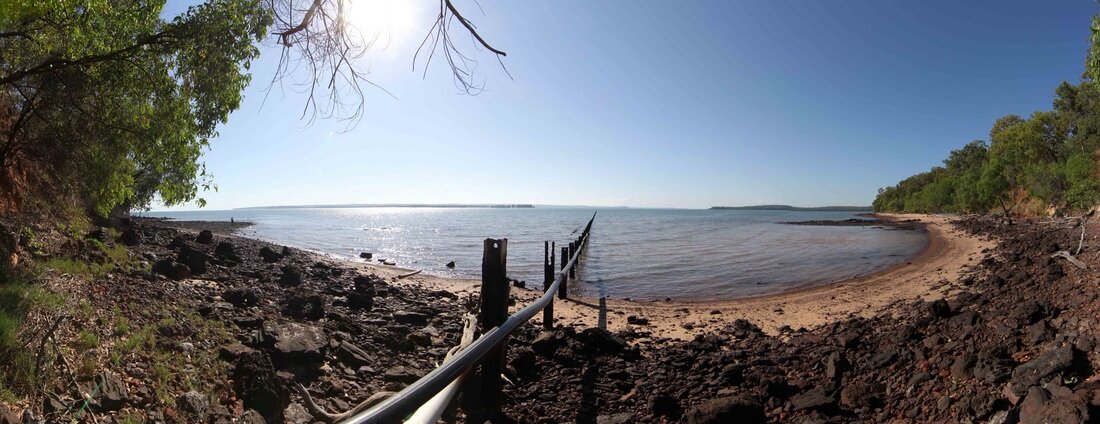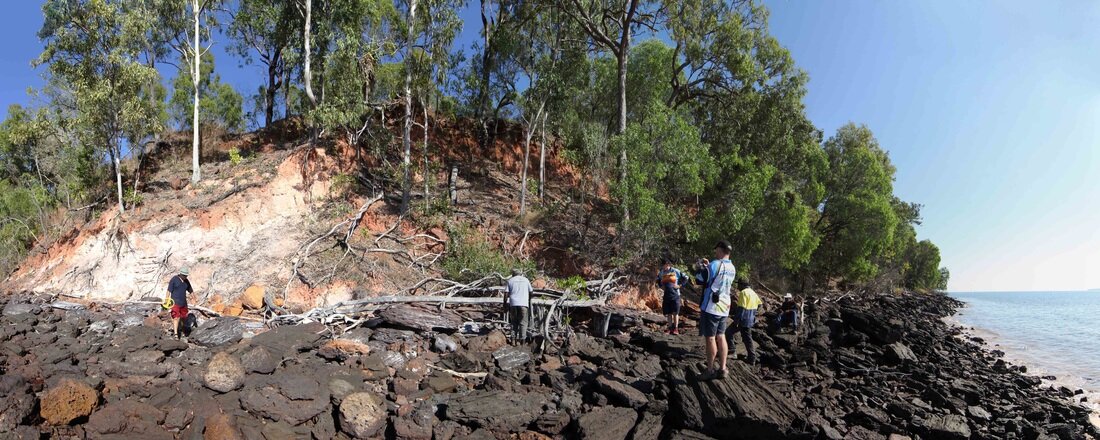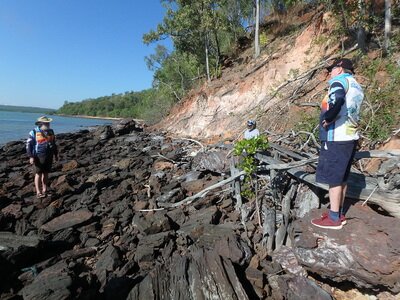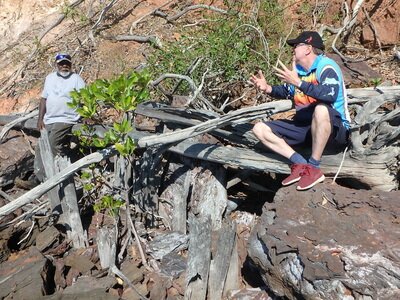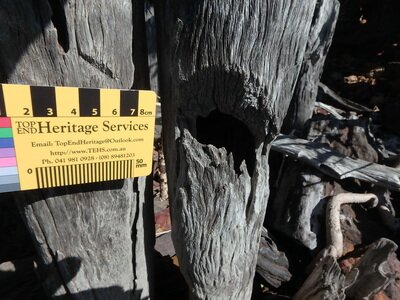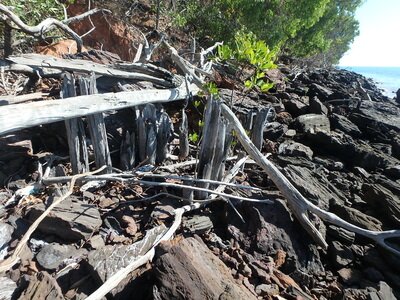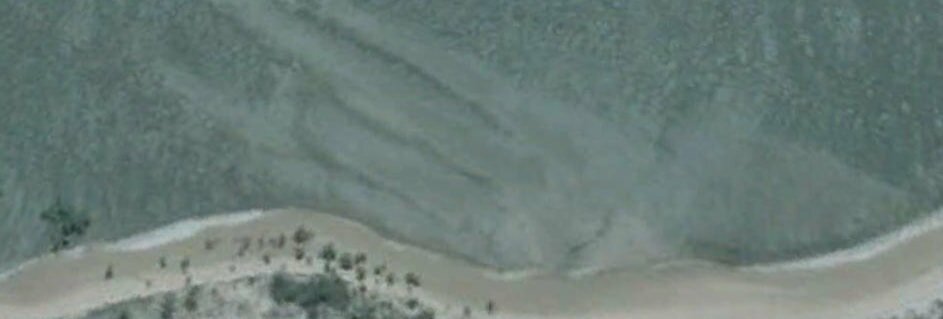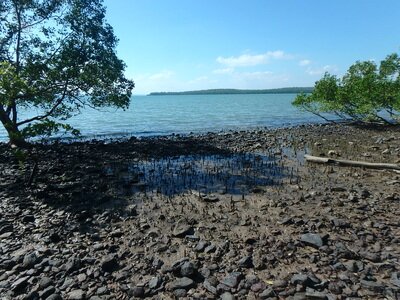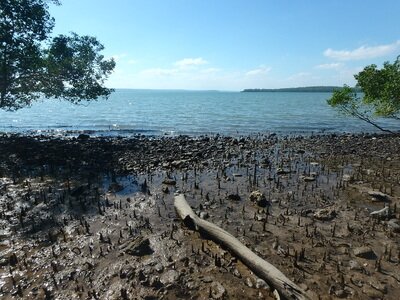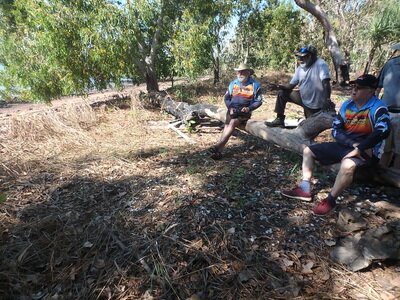Macassan Weir & Fish Trap
Macassan Weir and Fish
'Macassan' Fish Trap Site
Jack the Yolngu maintained devices to slow the fish so they could be speared - low ridges with a wicket fence and basket traps but not the great monumental things. Missionaries & WW2 squaddies built & extended traps like the ones either side of the barge ramp at Milingimbi after the Macumba was skittled but that was just close to their bases. I've asked many Yolngu about various large traps in remote areas and they all say they were built by people who came from the sea long before the Macassans. Yolngu never had the population to require such traps - the labour needed is enormous & they don't approve of shifting things about - if it's there it's there for a reason. It's been suggested that they could be like a dry dock or shelter for unloading/loading vessels & they are usually sheltered from the NW monsoon like the ones in the Wessels & south of Yirrkala but again the Maccs were divers, they had nets & great trolling lines as well as the locals bringing them wallabies etc. The only time they'd need bulk fish was to smoke prior to the fleet leaving the coast. The circular trap at Goulburn has been examined for a Phd thesis that said it was Samoan of Fijian or some such - which would be fun but I think it's just a normal inshore trepang holding trap that's been sent offshore by coastal erosion - which has done ferocious damage just in the 40 years that I've been visiting the joint. One curious thing I've learned form looking at these traps is that each culture, island & even community has their own signature design & there's one which I've called the pendant trap which is a dead ringer for the Yolngu depiction of a whirly whirly waterspout
In his seminal work 'The Voyage to Marege' Campbell Macknight gives the impression that the Macassans didn't visit the Tiwi's because there are no useful trepang in the shadow of the islands. Whilst it is right that the skinny black fish trepang such as those in Port Darwin are useless he has explained that he simply did'nt have the time to explore the top coast of the Tiwi Islands.
